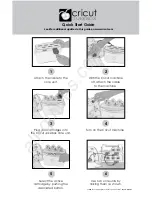
9
TO ENSURE SAFETY
•
If mineral oil adheres to the brake hose, use isopropyl alcohol to clean the hose and
remove the oil.
•
Keep the tool and the blades out of reach of children.
•
Use isopropyl alcohol or a dry cloth when cleaning brake hoses and cleaning and
maintaining tools. Do not use commercially available brake cleaners. Doing so may cause
damage to plastic parts.
NOTICE
Be sure to also inform users of the following:
•
When the bicycle wheel has been removed, it is recommended that pad spacers are
installed. Do not depress the brake lever while the wheel is removed. If the brake lever is
depressed without the pad spacers installed, the pistons will protrude further than
normal. If that happens, consult a place of purchase.
•
Use soapy water and a dry cloth when cleaning and carrying out maintenance of the
brake system. Do not use commercially available brake cleaners or silencing agents. Such
substances can cause damage to parts such as seals.
•
In the case of carbon levers, wash them with a soft cloth using a neutral detergent.
Otherwise, the material may be damaged and lose strength.
•
Avoid leaving the carbon levers in areas of high temperature. Also keep them well away
from fire.
•
Products are not guaranteed against natural wear and deterioration from normal use
and aging.
•
For maximum performance we highly recommend SHIMANO lubricants and maintenance
products.
For installation to the bicycle, and maintenance:
•
The 203 mm and 180 mm disc brake rotors have a larger diameter than the 160 mm disc
brake rotor for cross-country bicycles, and so the warping of these disc brake rotors is
greater. As a result, they may interfere with the performance of the brake pads.
•
If the brake caliper mounting boss and the dropout are not parallel, the disc brake rotor
and caliper may touch.
•
When the bicycle wheel has been removed, it is recommended that pad spacers are
installed. The pad spacers will prevent the piston from coming out if the brake lever is
depressed while the wheel is removed.










































